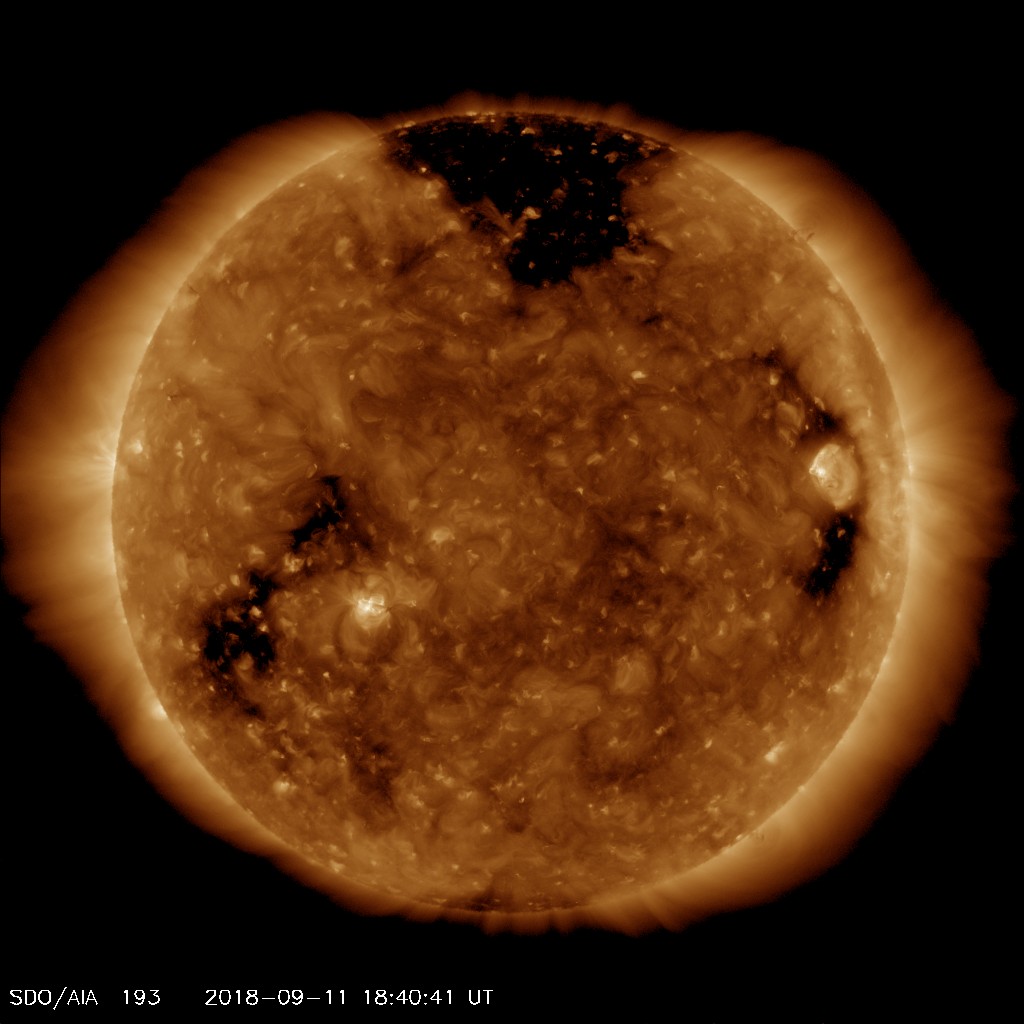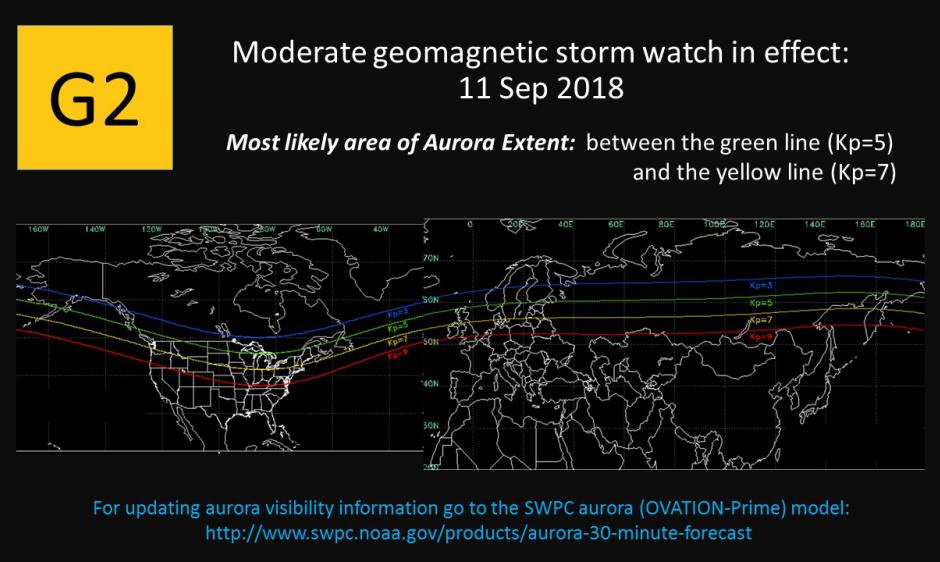Hole in Sun's Atmosphere Amps Up Northern Lights

The northern lights just got a boost thanks to a big hole in the sun's atmosphere, and there could be something of a repeat showing tonight.
A moderate geomagnetic storm made flickering auroras visible to skywatchers as far south as Minnesota and Wisconsin early this morning (Sept. 11), according to Spaceweather.com.
That storm was triggered by an especially potent and fast-moving burst of solar wind — the stream of charged particles flowing constantly from the sun — which escaped through a gaping hole in the sun's outer atmosphere, known as the corona.
The northern and southern lights result when such particles slam into molecules high up in Earth's atmosphere, generating a glow. Earth's magnetic field channels these particles toward the planet's poles, which explains why the auroras are usually restricted to high latitudes. But special circumstances — such as coronal holes and giant explosions of solar plasma called coronal mass ejections — can extend the intensity and the reach of these dazzling light displays.

The geomagnetic storm responsible for this morning's ramp-up is now subsiding, Spaceweather.com reported. But there's still a 70 percent chance of minor storming through tomorrow (Sept. 12), according to forecasters with the National Oceanic and Atmospheric Administration's Space Weather Prediction Center.
So, look up tonight if you live in the upper Midwest, New England, the Pacific Northwest or somewhere else along similar latitude lines — you may just get lucky!
Follow Mike Wall on Twitter @michaeldwall and Google+. Follow us @Spacedotcom, Facebook or Google+. Originally published on Space.com.
Get the Space.com Newsletter
Breaking space news, the latest updates on rocket launches, skywatching events and more!
Join our Space Forums to keep talking space on the latest missions, night sky and more! And if you have a news tip, correction or comment, let us know at: community@space.com.

Michael Wall is a Senior Space Writer with Space.com and joined the team in 2010. He primarily covers exoplanets, spaceflight and military space, but has been known to dabble in the space art beat. His book about the search for alien life, "Out There," was published on Nov. 13, 2018. Before becoming a science writer, Michael worked as a herpetologist and wildlife biologist. He has a Ph.D. in evolutionary biology from the University of Sydney, Australia, a bachelor's degree from the University of Arizona, and a graduate certificate in science writing from the University of California, Santa Cruz. To find out what his latest project is, you can follow Michael on Twitter.









